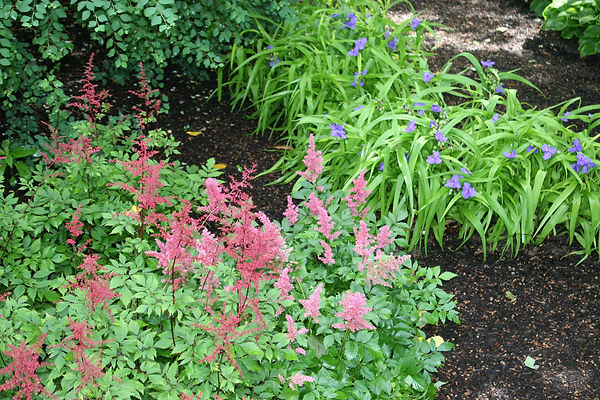
What's Growing
What’s Growing in the Parking Lot?
The parking lot is very active in more than one sense of the word! Several times each week the parking lot is 50-75% occupied with cars some of whose occupants are attending programs, others are looking for a good read and others come to study.
The other activity you might not have noticed are the plants, shrubs and trees growing throughout the parking lot. Some of these plants will provide shade and colorful flowers. But more importantly, a good number of the plants are busy cleaning the storm water runoff from the paved surfaces before they reach the storm drainage system on Route 303. In addition, the bioswales and rain garden are instrumental in reducing storm water runoff to neighboring properties.
How is this accomplished? The parking lot has two medians running east to west which separate the parked cars. These islands are not just plant filled medians but active bioswales.
What is a bioswale? A bioswale is a depressed basin designed to remove silt and pollution from surface runoff water. The parking lot surface is pitched toward both bioswales and there are regular openings on the north face of the Belgian block curbs to allow the surface runoff to easily reach the bioswales. Once there, the plants begin their work!
The storm water that finally enters the drainage system beneath the swales and rest of the parking lot has thus been naturally filtered of water pollutants such as silt, inorganic contaminants and organic chemicals. From the bioswales the storm runoff travels underground through the drainage system into the large rain garden located at the southern part of the parking lot.
The rain garden is a much larger and more elaborate storm water retention system that will hold large amounts of water, allowing the water to again be naturally filtered through the use of primarily native plants. Water filters through soil layers before entering the groundwater system. The root systems of the plants enhance infiltration, maintain and augment soil permeability, provide moisture redistribution, and sustain diverse microbial populations involved in biofiltration.
"Rain Garden." Wikipedia, The Free Encyclopedia. Wikimedia Foundation, Inc. 22 July 2004. Web. 9 January 2012.
Also, through the process of transpiration, rain garden plants return water vapor to the atmosphere where it evaporates, diminishing the quantity of water fed into the Town’s system.
In both the bioswales and the rain garden a significant number of native plants are used because they generally do not require fertilizer and are more tolerant of the local climate, soil and weather conditions. Furthermore, they attract local wildlife such as native birds and butterflies.

